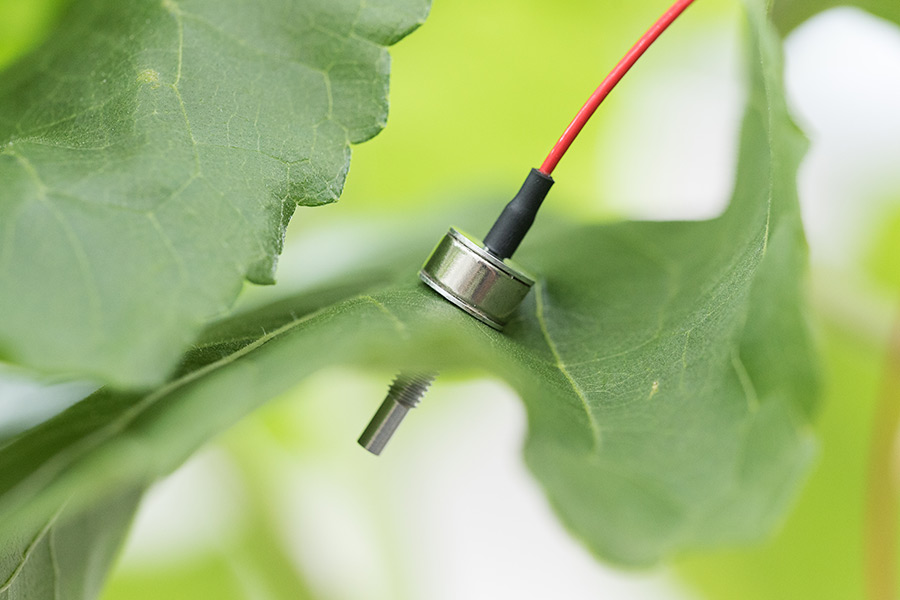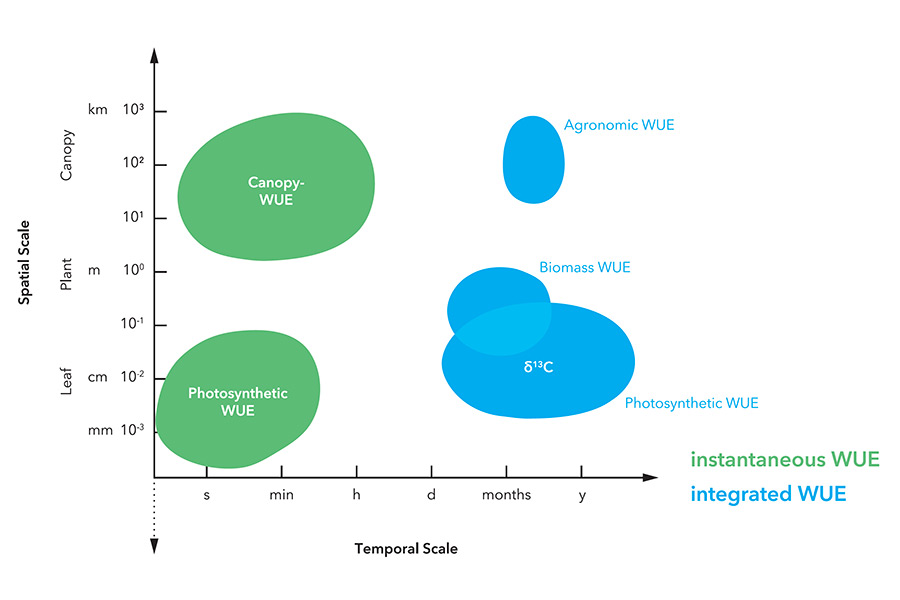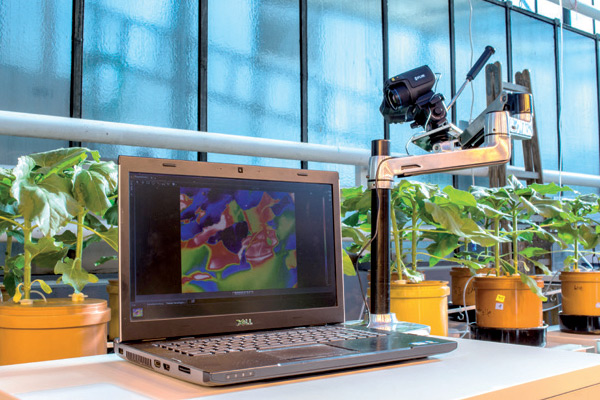Research
Agricultural production is highly vulnerable to increased incidences of drought, and water availability is one of the most frequently limiting abiotic factors in crop production. Improving the water-use efficiency (WUE) of crops and cropping systems is therefore an important goal to meet the current challenges of global climate change.
WUE can be considered a measure for the efficiency in optimizing carbon (C) assimilation while minimizing the water use and is generally described by the ratio of assimilated C or biomass per unit of water loss via transpiration. Stomata play a crucial role in regulating the WUE as they determine the rate of water loss by transpiration and carbon dioxide (CO2) uptake for photosynthesis and thus, plant productivity. Since both photosynthesis and transpirational processes react to environmental and plant internal responses, WUE is rather highly dynamic than static.
Research at IAPN focuses on the evaluation of WUE on a leaf and plant scale by measurements of biomass production, whole plant transpiration, and photosynthetic leaf gas exchange, hence assessing the C and water fluxes in the air-leaf-interphase.
In order to understand WUE, IAPN's research on photosynthesis is complemented with intensive research on plant water relations and transpirational processes. The water relations at the whole plant and canopy levels and the way plants respond to water stress by distributing water, and consequently nutrients, between its different organs at specific times of plant development is not fully understood.
 Thermal image of sunflower plants. In an IAPN experiment, plants were grown hydroponically and subjected to different levels of potassium (K) supply. Additionally, osmotic stress was induced by addition of PEG-6000. White numbers represent average leaf surface temperatures (°C). The plant with osmotic stress and the lowest K supply had highest leaf temperatures, hence indicating lowest transpiration rates due to stomatal closure. (Source: B. Jákli, IAPN)
Thermal image of sunflower plants. In an IAPN experiment, plants were grown hydroponically and subjected to different levels of potassium (K) supply. Additionally, osmotic stress was induced by addition of PEG-6000. White numbers represent average leaf surface temperatures (°C). The plant with osmotic stress and the lowest K supply had highest leaf temperatures, hence indicating lowest transpiration rates due to stomatal closure. (Source: B. Jákli, IAPN)
In this respect, the non-destructive and continuous monitoring of water relations in different plant parts can complement measurements of transpiration and provide insight into how plants respond to their environment and WUE is affected.
The research conducted at IAPN on this field aims to investigate the hydraulic mechanisms used in complex spatial and temporal dynamics of plant water relations, in particular plant responses to drought stress, across multiple scales from within-leaf to canopy level using the leaf patch clamp pressure probe (LPCP). This non-invasive method allows continuous monitoring of cell turgor (thus plant water status) for extensive periods of time and comparing it with changes in environmental conditions. The pressure of the patch clamp is inversely related to the leaf patch turgor pressure, Pc, which in its turn relates to the cell water content.

LPCP probe: for assessing the plant water status a small patch of a leaf is clamped between two magnets. The force between the magnets applies a constant pressure on the leaf patch. A sensor chip is embedded in the upper magnet and senses the pressure transfer function of the patch – that is the attenuated pressure, Pp, in response to the pressure by the magnetic force. Data provided by the chip are continuously monitored and recorded. Pp is inversely related to the leaf patch turgor pressure, Pc, which in its turn relates to the tissue, and ultimately cell-water content. (Photo: D. Jákli)
In this way, it is possible to follow the dehydration/rehydration kinetics, i.e., the internal redistribution of water, over diel scales and in response to treatments, e.g., through closure of stomata at midday or in response to drought, light intensity or CO2. Additionally, comparison between different plant species, genotypes or parts of the plant could also identify different mechanisms of tolerance to drought stress.










